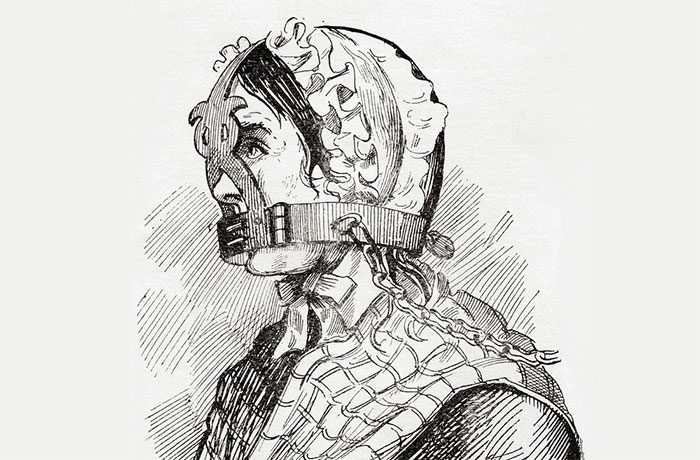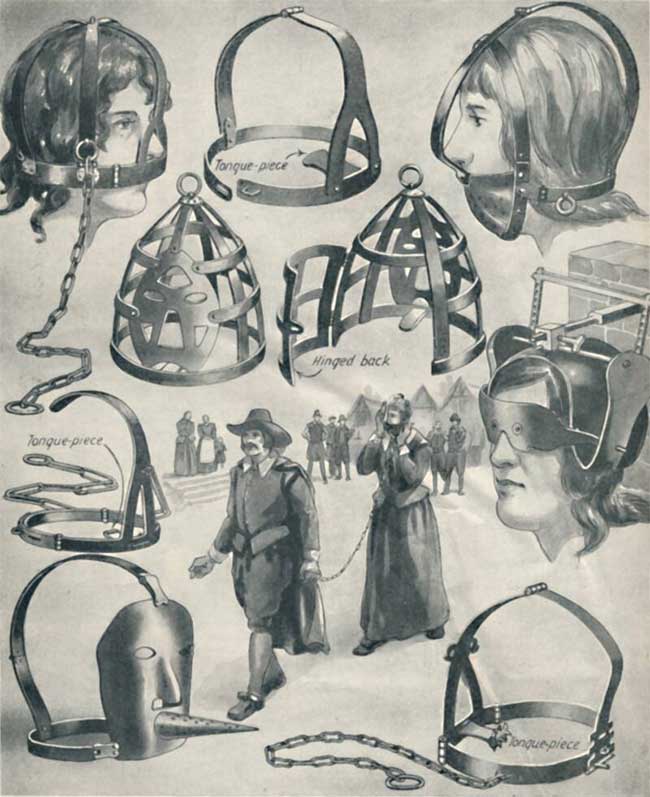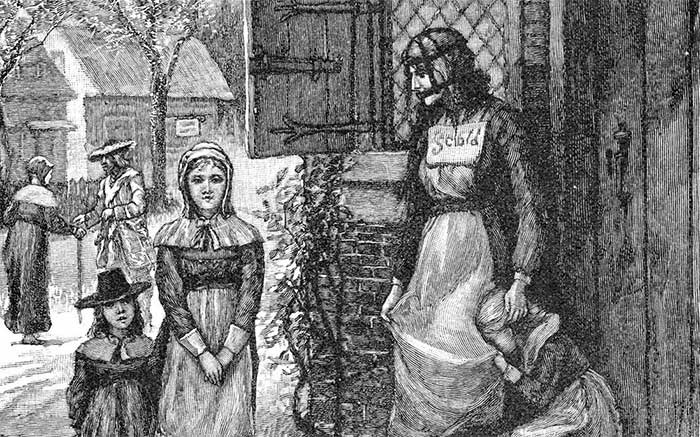Throughout human history, the Medieval period is often associated with brutal forms of torture and punishment, particularly against women. One of the most infamous torture devices was the Scold’s Bridle, also known as the “bridle of scolds”, a special apparatus designed to silence women.
What is Scold’s Bridle?
The Scold’s Bridle is a device made of iron, structured like a cage that encircles the head, consisting of a metal frame that surrounds the face, with an additional sharp iron mouthpiece that presses down on the tongue of the wearer. The primary purpose of this device is to prevent women from speaking or verbal communication.
The Scold’s Bridle was not only meant to silence the wearer but also served as a means of public humiliation. Women forced to wear the Scold’s Bridle often had to parade around town, while the surrounding populace could freely mock them and even throw objects at them. This was a way for the authorities of that time to maintain order and moral discipline, as well as a tool for controlling and subjugating women’s voices.

Not only a punishment, the Scold’s Bridle was also a means of public humiliation.
History and Origins of Scold’s Bridle
The exact origin of the Scold’s Bridle remains unclear, but the device appears in documents from the 14th century, when a character in Geoffrey Chaucer’s work referenced the idea of “whether she would be fastened with a bridle.”
However, official records of the use of the Scold’s Bridle only emerged in the 16th century, when the device was first used in Scotland. In 1567, a law in Edinburgh stipulated that those who behaved offensively or were considered “morally deficient” would be compelled to wear the Scold’s Bridle. Subsequently, this device spread to England and many other parts of Europe, such as Germany, becoming a means of punishing women for behaviors deemed “unruly” or “beyond the duties of women.”

Those who behaved offensively or were considered “morally deficient” would be forced to wear the Scold’s Bridle.
What Types of Women Were Forced to Wear Scold’s Bridle?
During the Medieval period, society held a heavy bias against women, and a woman deemed “talkative” or “disobedient” to her husband could be punished with the Scold’s Bridle. The term “scold” at that time referred to a woman who nagged, disrupted her neighbors’ peace, or opposed her husband and clergy. Women labeled as “talkative” also included those who gossiped, cursed, or committed blasphemy—criticizing or expressing contempt toward the divine or the church.
Historical records indicate that the Scold’s Bridle was not only used to “control” ordinary women but also to silence women with “loose morals,” meaning those considered noncompliant with the strict moral codes of that era. The device was even used as punishment for women who preached publicly, calling for societal change.
A notable case is Dorothy Waugh, a Quaker missionary who was forced to wear the Scold’s Bridle and endure the constraints of this device for hours.

Just a woman deemed “talkative” or “disobedient” to her husband could be punished with the Scold’s Bridle.
Scold’s Bridle and Other Brutal Punishments
In addition to the Scold’s Bridle, many other forms of punishment were implemented to humiliate and control women’s voices. Two of the most common forms of punishment were the cucking stool and ducking stool.
The cucking stool is a chair with restraints, typically used to bind women accused of being talkative or gossiping. The punished individual could be made to sit on the chair and paraded around town or even left in public to endure the ridicule of the crowd. Later, the cucking stool evolved into the ducking stool, a more brutal form of punishment.
The woman bound to the chair would be repeatedly submerged in water, posing a life-threatening risk due to shock or drowning. Ducking stools were often carried out in village ponds or rivers, subjecting the victim to extreme fear and humiliation before the entire community.

Ducking stool punishment.
Changes in Society and the End of Scold’s Bridle
The 19th century, alongside the rise of gender equality thoughts, brought significant changes in societal perceptions regarding the punishment of women. In England, in 1821, a judge officially ordered the destruction of the Scold’s Bridle, stating that this “barbaric relic” was no longer suitable for society. He asserted that such punishment only reflected the cruelty and inhumanity of the previous era.
By 1856, the final recorded use of the Scold’s Bridle in England had come to a close. Methods of punishment like the Scold’s Bridle officially became a thing of the past, marking the end of a dark chapter in Western social history.

By 1856, the last recorded use of the Scold’s Bridle in England had concluded.
However, the story of the Scold’s Bridle serves as a reminder of the efforts to suppress voices and restrict women’s rights throughout history, evidenced by violence and public humiliation. Although such forms of torture no longer exist, the control of women’s voices persists in various forms. Limitations on freedom of speech and gender discrimination remain significant issues in many places, and the history of the Scold’s Bridle serves as a cautionary tale for us to be vigilant in ensuring freedom and equality for all, regardless of gender.
Today, gender equality is widely recognized worldwide, and efforts to fight for justice and freedom of speech continue unabated. However, the story of the Scold’s Bridle shows that the oppression of society against women is not just a historical issue but also a reminder of the importance of protecting human rights and individual freedoms.


















































